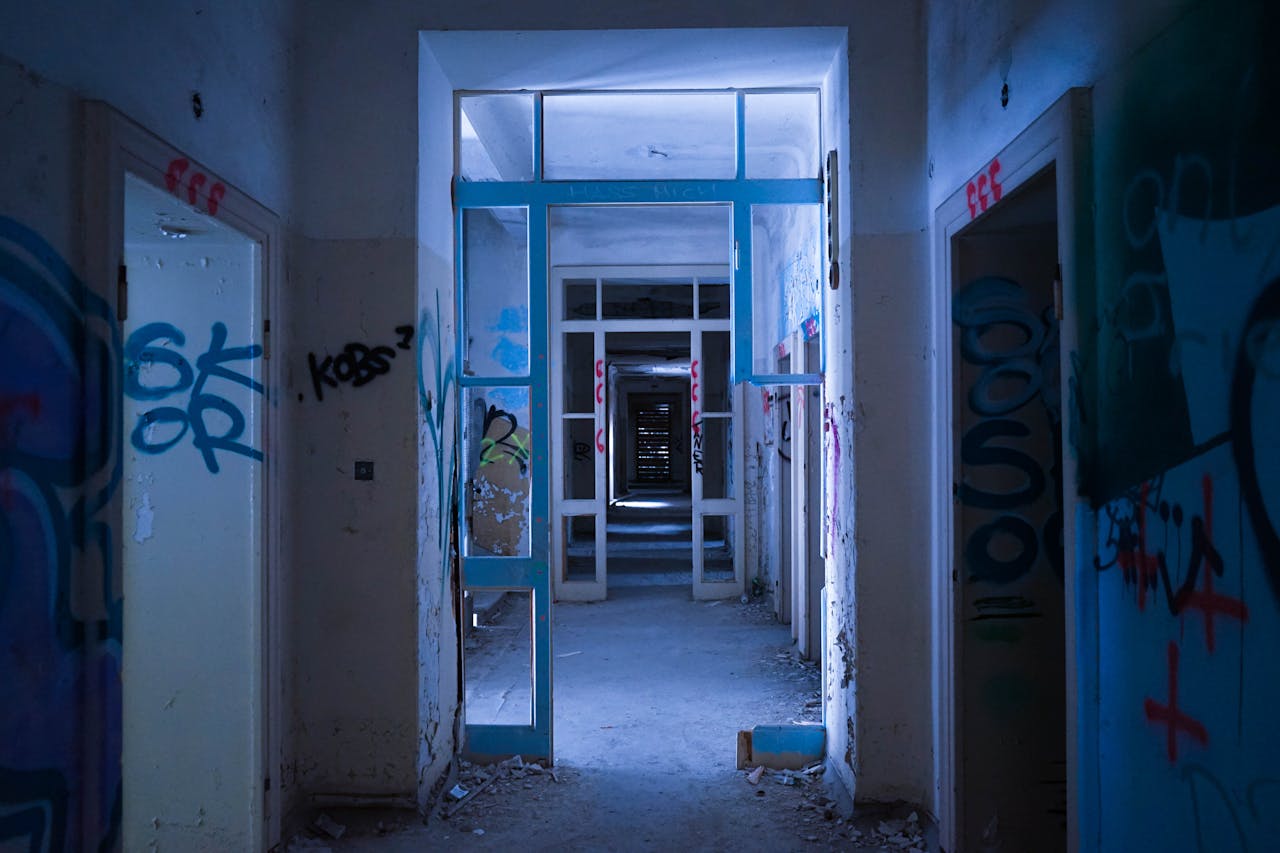Dealing with property damage caused by tenants is a challenge that every landlord faces at some point. It’s important to handle these situations professionally and efficiently to minimize costs and maintain good relationships with your tenants. This guide will walk you through understanding and managing tenant-caused property damage, ensuring you know your rights as a landlord and the steps you should take if such incidents occur.
Understanding Tenant Damage to Property
Tenant damage to property can range from minor accidental damages, like a stained carpet or a chipped tile, to more significant intentional damages such as holes in walls or broken windows. Understanding what constitutes tenant-caused damage is crucial in managing these situations effectively. Typically, normal wear and tear is expected and cannot be treated as damage. Wear and tear could include things like faded paint or worn-out carpeting due to regular use. In contrast, damage is generally defined as harm that affects the usability or value of the property and could have been avoided with reasonable care by the tenant.
Identifying the type of damage is the first step in addressing it.
Regular inspections and maintaining a detailed inventory of the property’s condition when the tenant moves in are helpful practices. These actions create a clear baseline and make it easier to identify and document any damage at the end of the tenancy.
Tenant Destruction of Property
When the damage goes beyond simple wear and tear to actual destruction, the situation becomes more serious. Destruction implies a deliberate action by the tenant to alter or ruin the property. This could include breaking doors, smashing windows, or making unauthorized alterations that compromise the structure and safety of the property.
If you discover that your property has been significantly destroyed, it is important to act swiftly. Document the destruction immediately with photos and detailed notes. This documentation will be crucial for insurance claims and legal proceedings, should they become necessary. It’s also important to contact the tenant directly to discuss the damage. Depending on the severity and the terms of your lease agreement, this might lead to eviction proceedings or legal action if the tenant does not agree to cover the costs of repairs.
What Damages Are Tenants Responsible For?
When it comes to rental properties, tenants are generally responsible for damages that go beyond normal wear and tear. Normal wear and tear refers to the natural deterioration that occurs from everyday living, such as faded paint or worn carpets. However, tenants are liable for any damage that results from negligence, accidents, or intentional actions. This could include broken windows, holes in the walls, or damaged fixtures.
It’s crucial to have clear guidelines in the lease that outline what tenants are responsible for, as well as the consequences of failing to maintain the property. This clarity helps prevent misunderstandings and ensures that both parties are on the same page regarding property care and repair costs.
Landlord Rights When Tenant Destroys Property
As a landlord, you have specific rights when it comes to dealing with tenants who destroy property. These rights are typically outlined in the lease agreement signed by the tenant at the start of their tenancy. The lease should specify what constitutes unacceptable damage and the consequences of such actions, including the potential for eviction and the tenant’s responsibility for the costs associated with repairs.
You have the right to deduct the cost of repairs due to destruction from the tenant’s security deposit. However, it’s important to ensure that these deductions are itemized and communicated clearly to the tenant to avoid disputes. If the security deposit does not cover the full cost of the damage, you may also have the right to sue the tenant for the remaining costs. In any case, it’s advisable to consult with a lawyer to navigate the legal aspects properly and ensure that all actions you take are within the law and the terms of the lease.
Is Landlord Responsible for Tenant Damage to Neighbors Property?
Sometimes, tenant-caused damage extends beyond your property and affects neighboring properties. For instance, if a tenant’s actions lead to water damage in an adjacent apartment, this situation can become legally complex. Generally, as a landlord, you are not directly responsible for such damage unless it can be shown that you were negligent in preventing the tenant’s actions that caused the damage.
In these cases, it is usually the tenant who is legally responsible for compensating the affected neighbors. However, as the property owner, you may need to be involved in communicating and resolving these issues to maintain good relationships with your neighbors and ensure that all damages are appropriately addressed. You might also need to assist in the coordination of repairs and insurance claims, particularly if the damage impacts common areas of a multi-unit building.
What Happens If You Damage a Rental Property
When a tenant damages a rental property, several actions can be taken depending on the severity of the damage and the terms outlined in the lease agreement. Initially, it’s important for the tenant to report any damage to the landlord as soon as it occurs. This transparency allows for a quicker resolution and repair, potentially reducing further damage and associated costs.
If the damage is minor and accidental, the tenant might be required to either repair the damage at their own expense or compensate the landlord so that repairs can be made. However, for more significant damage, the tenant may face more serious consequences such as deductions from the security deposit, or in severe cases, legal action or eviction if the damage is deemed intentional or due to gross negligence.
Landlords should make the consequences of damaging property clear from the start of the tenancy within the lease agreement.
This should include outlining the process for reporting and repairing damages, and the financial implications for the tenant. Regular communication about these responsibilities can help prevent disputes and encourage tenants to take better care of the property.
Who Is Responsible for Vandalism: Landlord or Tenant?
Vandalism to rental property is an unfortunate event that raises questions about responsibility. Generally, if a tenant or their guests cause vandalism, the tenant is responsible for repairing the damage or covering the cost of repairs. Landlords should ensure that the lease agreement clearly defines vandalism and its consequences to avoid any ambiguity should such situations arise.
However, if vandalism occurs from an external source — for instance, by someone not living in or visiting the property — the situation can be more complicated. In these cases, while the landlord typically is not responsible for the acts committed, they are generally responsible for the repairs as part of maintaining the property’s safety and security. Landlords might need to file a claim with their insurance company or seek compensation through legal means if the perpetrator is known.
In both scenarios, having a comprehensive insurance policy that covers vandalism is crucial for landlords. It ensures that neither the landlord nor the tenant is financially burdened by acts of vandalism, particularly those caused by external parties.
Procedures for Documenting and Addressing Damage
Documenting and addressing tenant-caused damage efficiently is vital for property management. Whenever damage occurs, landlords should follow a systematic approach to documentation, which includes taking detailed photos of the damage and recording the date and extent of the harm. This should be compared against the move-in checklist completed by the tenant at the start of the tenancy, which details the property’s initial condition.
Once the damage is documented, the landlord should provide the tenant with a written notice of the damage, outlining the estimated repair costs and the expected timeline for repairs. This documentation serves as the basis for deducting costs from the tenant’s security deposit or for billing the tenant directly. If the damage exceeds the security deposit amount, landlords may need to provide additional invoices and pursue further compensation.
For actual repair work, landlords should use licensed professionals to ensure quality workmanship and compliance with local building codes. It’s also a good idea to keep receipts and invoices related to the repairs, as these can be important for insurance claims or legal purposes if disputes arise.
Financial Implications and Recovery
The financial impact of tenant-caused damage can vary greatly, but it typically involves the cost of repairs and potentially lost rental income if the property becomes uninhabitable. To mitigate these costs, landlords should act quickly in assessing and repairing the damage to minimize downtime of the rental unit.
Recovering these costs usually starts with the security deposit. However, if costs exceed the deposit amount, landlords may issue a bill to the tenant for the balance. If the tenant refuses to pay, the landlord might have to consider small claims court to recover the remaining costs. Insurance can also play a critical role here. Landlords should ensure they have adequate coverage that includes damage caused by tenants, which can provide a financial safety net in significant damage cases.
Handling financial recovery professionally and within the legal boundaries established by tenant law is crucial. It not only ensures that the landlord recovers costs effectively but also helps maintain a professional relationship with the tenant, even in challenging situations.
Preventive Measures and Tenant Screening
Preventing property damage begins with effective tenant screening and clear communication of property rules. A thorough screening process can help identify responsible tenants who are less likely to cause intentional damage. This includes checking past rental histories, references, and credit scores to gauge responsibility and reliability.
Equally important is setting clear expectations from the start. During the lease signing, explicitly discuss the property’s rules regarding damages and the tenant’s responsibilities. Ensure that tenants understand what constitutes acceptable wear and tear versus damage, and outline the financial consequences of any damage that occurs due to negligence or misconduct.
Regular property inspections are another preventive measure that should not be overlooked. Conducting periodic checks not only helps catch minor issues before they turn into major problems but also reinforces to tenants that the property is well-maintained and cared for, encouraging them to keep it in good condition. These inspections can be scheduled seasonally or semi-annually and should always be done with proper notice to respect the tenant’s privacy.





